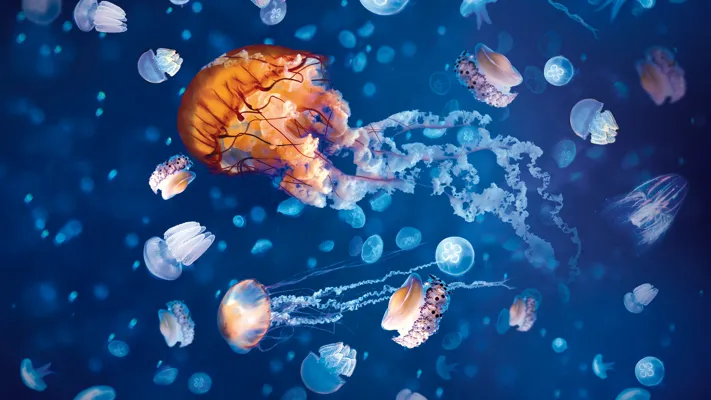- Book in advance & save
- Reschedule for free up to a day pre-arrival
- We are now cashless
Ocean Invaders welcomes you to enter the world of Jellyfish at SEA LIFE London. Stepping into the UK's largest jellyfish experience, Ocean Invaders will take you on a journey into the fascinating world of jellyfish through three unique interactive zones.
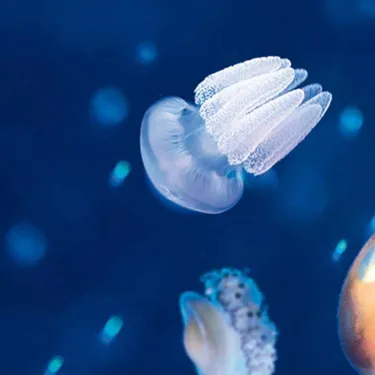
Zone 1: Discover Jellyfish
Follow the jellyfish life cycle through five clear stages of evolution and view our smallest jellies through special prism views!
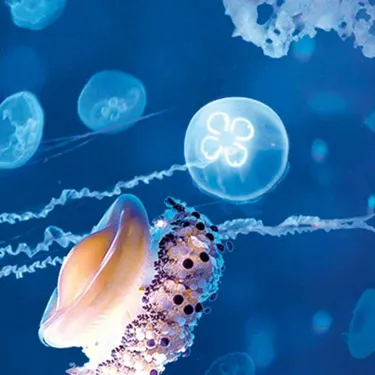
Zone 2: Understand Jellyfish
Understand both the good and the bad about jellyfish; how and when jellyfish take over the oceans! Do all jellyfish sting? You can even create your very own digital jellyfish!
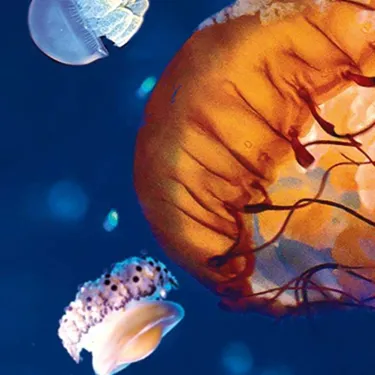
Zone 3: Wowed by Jellyfish
We won't spoil this zone for you by telling you about it, but you will be WOWED!
Jellyfish are older than all of our ancient reptiles. Scientists believe they first swam in our oceans around 500 million years ago! There are more than 350 different species of jellyfish.
The Lion’s Mane Jellyfish is over two metres tall – that’s taller than you! Others are as tiny as a pinhead. They can be found in all of our oceans and sometimes in freshwater too.
Jellyfish have venomous tentacles that they use to capture their prey. Most jellyfish are harmless to humans, but a few including the Box Jellyfish can cause a painful sting. Some species of baby fish are able to hide amoungst Jellyfish tentacles for protection!
Ocean Invaders will allow you to see jellyfish in a whole new light! Continue to read below to learn more about the types of Jellyfish you will see on your visit.
Entering an Invasion:
During your experience at Ocean Invaders, you can expect to see Moon Jellyfish, Upside Down Jellyfish, Japanese Sea Nettles and Amakusa Jellyfish all year around.
We'll also have some new additions for short periods throughout the year which will include White Spotted Jellyfish, Lagoon Jellyfish, Flame Jellyfish and many many more!
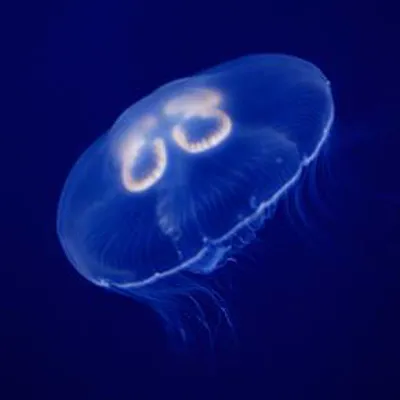
Moon Jellyfish - Aurelia Aurita
- Moon Jellyfish are a common species of found all around the UK
- They can withstand temperatures as low as 6 and as high as 31 degrees Celsius
- Their sting is fairly mild
- Turtles feed on Moon Jellyfish!
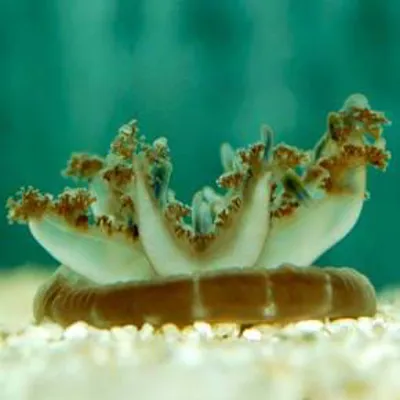
Upside Down Jellyfish - Cassiopea
- Upside Down Jellyfish live in shallow waters, lagoons and around mangroves
- They grow algae in their tentacles to provide extra food
- They are more vulnerable than species that live in the open ocean or deeper waters due to their proximity to coastal development and pollution
- They can grow to up 30cm in diameter!
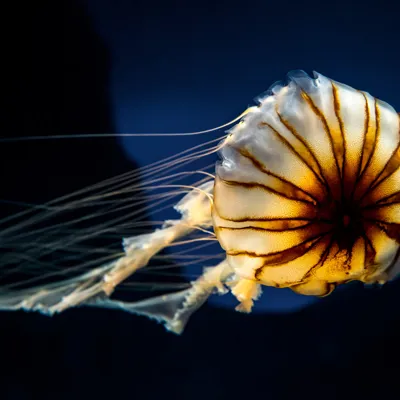
Japanese Sea Nettle - Chrysaora Melanaster
- Japanese Sea Nettle Jellyfish have sting that can cause skin irritation and a burning sensation.
- They are voracious carnivores, eating other jellyfish, copepods, anchovy eggs, larvae and zooplankton
- Their tentacles can get up to 3 metres long!
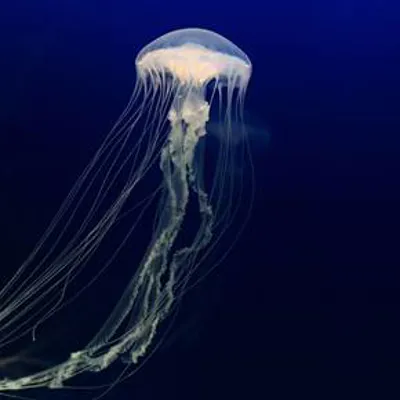
Amakusa Jellyfish - Sanderia Malayensis
- Amakusa Jellyfish can be seen in the South of Japan in the Summer
- They can reach a size of about 20cm in diameter
- Their sting is moderate
- They generally live in temperatures of 20-26 degrees
- They are covered in small dots on the top of their bell and have 32 lappets, 4 oral arms and 16 tentacles coming out from the bell!
